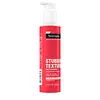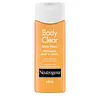What's inside
What's inside
 Key Ingredients
Key Ingredients

 Benefits
Benefits

 Concerns
Concerns

 Ingredients Side-by-side
Ingredients Side-by-side

Salicylic Acid 2%
MaskingWater
Skin ConditioningSodium C16 Olefin Sulfonate
EmulsifyingCocamidopropyl Betaine
CleansingSodium Methyl Cocoyl Taurate
CleansingDisodium Cocoamphodiacetate
CleansingGlycerin
HumectantLinoleamidopropyl Dimethylamine
Stearyl Pg-Dimonium Chloride Phosphate
Aloe Barbadensis Leaf Extract
EmollientAnthemis Nobilis Flower Extract
MaskingChamomilla Recutita Extract
Skin ConditioningCitric Acid
BufferingPropylene Glycol
HumectantTriclosan
PreservativeCI 19140
Cosmetic ColorantCI 17200
Cosmetic ColorantParfum
MaskingSalicylic Acid 2%, Water, Sodium C16 Olefin Sulfonate, Cocamidopropyl Betaine, Sodium Methyl Cocoyl Taurate, Disodium Cocoamphodiacetate, Glycerin, Linoleamidopropyl Dimethylamine, Stearyl Pg-Dimonium Chloride Phosphate, Aloe Barbadensis Leaf Extract, Anthemis Nobilis Flower Extract, Chamomilla Recutita Extract, Citric Acid, Propylene Glycol, Triclosan, CI 19140, CI 17200, Parfum
 Reviews
Reviews

Ingredients Explained
These ingredients are found in both products.
Ingredients higher up in an ingredient list are typically present in a larger amount.
Salicylic Acid (also known as beta hydroxy acid or BHA) is a well-known ingredient for treating skin that struggles with acne and clogged pores. It exfoliates both the skin's surface and deep within the pores to help clear out buildup, control oil, and reduce inflammation.
Unlike AHAs (alpha hydroxy acids), salicylic acid is oil-soluble. This allows it to penetrate into pores which makes it especially effective for treating blackheads and preventing future breakouts.
Salicylic acid is also known for its soothing properties. It has a similar structure to aspirin and can calm inflamed or irritated skin, making it a good option for acne-prone skin that is also sensitive.
Concentrations of 0.5-2% are recognized by the U.S. FDA as an over-the-counter topical acne product.
It can cause irritation and/or dryness if one's skin already has a compromised moisture barrier, so it's best to focus on repairing that before introducing this ingredient into your routine.
While salicylic acid does not increase sun sensitivity, it’s still important to wear sunscreen daily to protect your skin.
If you are looking for the ingredient called BHA or Butylated Hydroxyanisole, click here.
Learn more about Salicylic AcidWater. It's the most common cosmetic ingredient of all. You'll usually see it at the top of ingredient lists, meaning that it makes up the largest part of the product.
So why is it so popular? Water most often acts as a solvent - this means that it helps dissolve other ingredients into the formulation.
You'll also recognize water as that liquid we all need to stay alive. If you see this, drink a glass of water. Stay hydrated!
Learn more about Water